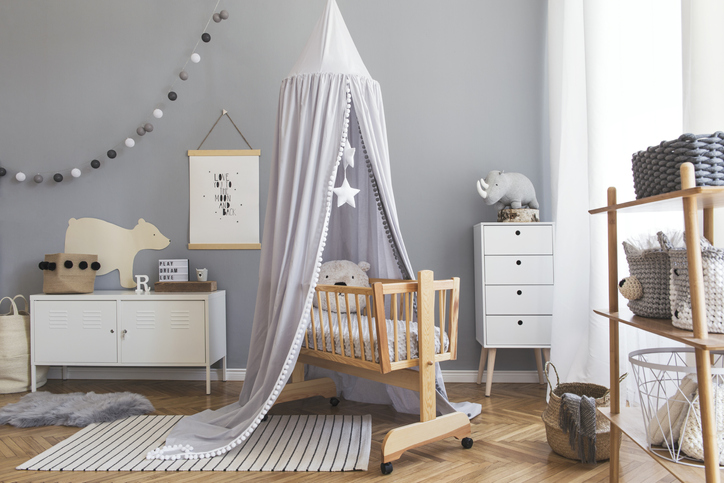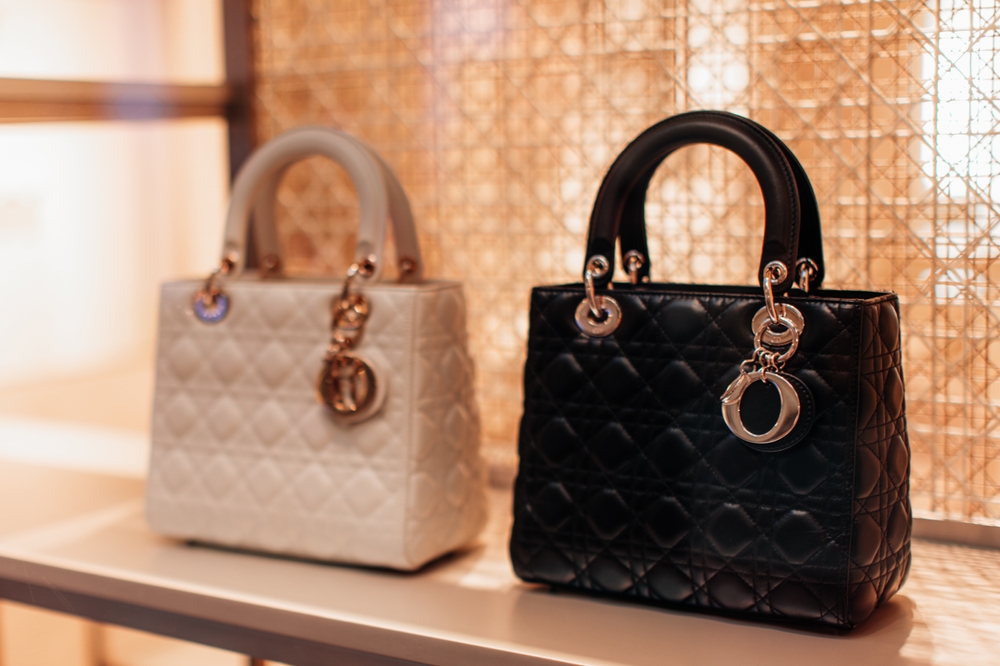‘Sad Beige’ Has Taken Over Baby Gear, Clothing, Decor
Parents are gravitating toward neutral hues that match their minimalist tastes; ‘I don’t think many kids’ favourite colour is beige’
Krissy Kyne, a 27-year-old makeup artist in San Antonio, is giving birth to a baby boy this week. The room waiting for him at home is neither blue nor pink, but beige.
It has a light-coloured wood crib, a woven jute rug, a latte-hued changing pad and a cream ottoman, with oatmeal throw pillows and camel muslin blankets strewn about. Ms. Kyne said her mother-in-law told her her taste for neutrals looked “sterile,” but she has committed to the aesthetic, stocking drawers with beige onesies, beige sweatsuits and beige socks.
Ms. Kyne joins a wave of parents eschewing bright and stereotypically gendered colours for kid wares, and instead choosing earthy, neutral tones aligned with minimalism. It’s a look TikTok satirist Hayley DeRoche has termed “sad beige,” but some see it as a happy development: The ecru, blond and brown products fit right in with their stylishly muted décor in the rest of the house.
“Our whole house isn’t changing because we have kids,” said Jen Atkin, a celebrity hairstylist and entrepreneur in Los Angeles known for working with the Kardashians—although she conceded that the aesthetic can invite stains. Because she has two kids and three dogs, she bought easy-to-clean beige outdoor rugs and couches for her home.
Kylie Jenner showed off the beige furnishings in her son Wolf’s nursery in a video from March. Caitlin Covington, a content creator in North Carolina known online as “Christian Girl Autumn,” often dresses her daughter in brown and ecru ensembles for portraits.
“I’ve been influenced by influencers,” said Amina Kadyrova, a mother of three in New Jersey. “I’m a victim of the marketing system. But I genuinely like it.” Neutral colours are easier to mix and match on kids, she added.
Earlier this year, Baby Gap created a designated beige section inside some stores after researching market trends, according to the brand’s head designer, Carolyn Koziak. A new line from Walmart, Easy Peasy, includes a lot of beige, too. According to Etsy, searches for beige kids clothes jumped 67% in the past 12 months compared with the previous period.
“It seems to be marketing this fantasy that if I buy neutrals, my children will also be neutral, calm and quiet,” said Ms. DeRoche, the TikTok user, who lives in Petersburg, Va.
Most children’s companies still sell lots of toys and clothes in bright and inviting primary colours. “It’s important to expose kids to learning colours to help them with their visual perception,” said Ann-Louise Lockhart, a pediatric psychologist in San Antonio. “Having variety is important for brain development.”
Amanda Gummer, a neuropsychologist and children’s play expert in Britain, said there isn’t evidence that colourless toys stunt developmental milestones. Still, Dr. Gummer said, “the motivation of having an Instagrammable house and not letting kids explore and make a mess worries me. I don’t think many kids’ favourite colour is beige.”
Ms. Atkin said her children can get their colour fix elsewhere. “My son will go to indoor gymnasiums, play centres, museums, and he gets covered in slime and goo, and colour and glitter,” she said. “We do that outside of our house, and then we get to come home to a nice, calm, clean environment.”
Other parents noted the pacifying nature of neutrals. “Brown and beige make me feel calmer,” said Maddie Berna, a photographer and mother of two in central California. “I personally don’t like super bright colours, and they do wear that sometimes, but it’s annoying to see all the time.”
Ms. Berna’s mother, Ashley Durham, isn’t a fan.
“All of Ellie’s bows are the same kind of beige and I would like her to wear something that sticks out more,” she said, referring to her 15-month-old granddaughter. “I do try to buy them brighter color clothing. I just never see them in it.”
Naomi Coe, a California-based interior designer specialising in kid’s rooms, said she experienced an influx of beige requests during the pandemic, when many parents were spending more time at home.
“Neutral is going to give you calm, serene, homey, cozy,” she said. “I’ve noticed a shift where people are after that feeling more.”
Laura Roso Vidrequin, founder of secondhand kids-clothing marketplace Kids O’Clock in London, said beige products sell three times as fast as other colours on the site—perhaps because they are gender-neutral, she said, hence easy to pass down.
Elizabeth Robles Jimenez, a mother of four in Downey, Calif., said she bought plenty of pink and princessy products for her first three daughters before settling on beige décor and wooden toys for her 2-year-old, Ava.
“I think whites and creams give her an opportunity to discover her own self and not have the mentality that because she’s a girl, she needs all pink,” Ms. Robles Jimenez said.
Mushie, a startup that makes pacifiers, bibs and stacking cups in beige hues, has seen double-digit growth this year, according to its chief executive, Levi Feigenson. Moms cited the labels Oat, Soor Ploom, the Simple Folk, Tiny Cottons, Jamie Kay, Nora Lee, Rylee + Cru as others with an abundance of beige products.
“When I started my company [over 10] years ago, you couldn’t get a baby or child garment in a neutral colour unless you went to Europe,” said Marissa Buick, the Brooklyn founder of kidswear brand Soor Ploom. Her colour choices reflect ones “you won’t find in a shop, but are in nature,” she said.
 Copyright 2020, Dow Jones & Company, Inc. All Rights Reserved Worldwide. LEARN MORE
Copyright 2020, Dow Jones & Company, Inc. All Rights Reserved Worldwide. LEARN MORE
This stylish family home combines a classic palette and finishes with a flexible floorplan
Just 55 minutes from Sydney, make this your creative getaway located in the majestic Hawkesbury region.
As Paris makes its final preparations for the Olympic games, its residents are busy with their own—packing their suitcases, confirming their reservations, and getting out of town.
Worried about the hordes of crowds and overall chaos the Olympics could bring, Parisians are fleeing the city in droves and inundating resort cities around the country. Hotels and holiday rentals in some of France’s most popular vacation destinations—from the French Riviera in the south to the beaches of Normandy in the north—say they are expecting massive crowds this year in advance of the Olympics. The games will run from July 26-Aug. 1.
“It’s already a major holiday season for us, and beyond that, we have the Olympics,” says Stéphane Personeni, general manager of the Lily of the Valley hotel in Saint Tropez. “People began booking early this year.”
Personeni’s hotel typically has no issues filling its rooms each summer—by May of each year, the luxury hotel typically finds itself completely booked out for the months of July and August. But this year, the 53-room hotel began filling up for summer reservations in February.
“We told our regular guests that everything—hotels, apartments, villas—are going to be hard to find this summer,” Personeni says. His neighbours around Saint Tropez say they’re similarly booked up.
As of March, the online marketplace Gens de Confiance (“Trusted People”), saw a 50% increase in reservations from Parisians seeking vacation rentals outside the capital during the Olympics.
Already, August is a popular vacation time for the French. With a minimum of five weeks of vacation mandated by law, many decide to take the entire month off, renting out villas in beachside destinations for longer periods.
But beyond the typical August travel, the Olympics are having a real impact, says Bertille Marchal, a spokesperson for Gens de Confiance.
“We’ve seen nearly three times more reservations for the dates of the Olympics than the following two weeks,” Marchal says. “The increase is definitely linked to the Olympic Games.”

Getty Images
According to the site, the most sought-out vacation destinations are Morbihan and Loire-Atlantique, a seaside region in the northwest; le Var, a coastal area within the southeast of France along the Côte d’Azur; and the island of Corsica in the Mediterranean.
Meanwhile, the Olympics haven’t necessarily been a boon to foreign tourism in the country. Many tourists who might have otherwise come to France are avoiding it this year in favour of other European capitals. In Paris, demand for stays at high-end hotels has collapsed, with bookings down 50% in July compared to last year, according to UMIH Prestige, which represents hotels charging at least €800 ($865) a night for rooms.
Earlier this year, high-end restaurants and concierges said the Olympics might even be an opportunity to score a hard-get-seat at the city’s fine dining.
In the Occitanie region in southwest France, the overall number of reservations this summer hasn’t changed much from last year, says Vincent Gare, president of the regional tourism committee there.
“But looking further at the numbers, we do see an increase in the clientele coming from the Paris region,” Gare told Le Figaro, noting that the increase in reservations has fallen directly on the dates of the Olympic games.
Michel Barré, a retiree living in Paris’s Le Marais neighbourhood, is one of those opting for the beach rather than the opening ceremony. In January, he booked a stay in Normandy for two weeks.
“Even though it’s a major European capital, Paris is still a small city—it’s a massive effort to host all of these events,” Barré says. “The Olympics are going to be a mess.”
More than anything, he just wants some calm after an event-filled summer in Paris, which just before the Olympics experienced the drama of a snap election called by Macron.
“It’s been a hectic summer here,” he says.

AFP via Getty Images
Parisians—Barré included—feel that the city, by over-catering to its tourists, is driving out many residents.
Parts of the Seine—usually one of the most popular summertime hangout spots —have been closed off for weeks as the city installs bleachers and Olympics signage. In certain neighbourhoods, residents will need to scan a QR code with police to access their own apartments. And from the Olympics to Sept. 8, Paris is nearly doubling the price of transit tickets from €2.15 to €4 per ride.
The city’s clear willingness to capitalise on its tourists has motivated some residents to do the same. In March, the number of active Airbnb listings in Paris reached an all-time high as hosts rushed to list their apartments. Listings grew 40% from the same time last year, according to the company.
With their regular clients taking off, Parisian restaurants and merchants are complaining that business is down.
“Are there any Parisians left in Paris?” Alaine Fontaine, president of the restaurant industry association, told the radio station Franceinfo on Sunday. “For the last three weeks, there haven’t been any here.”
Still, for all the talk of those leaving, there are plenty who have decided to stick around.
Jay Swanson, an American expat and YouTuber, can’t imagine leaving during the Olympics—he secured his tickets to see ping pong and volleyball last year. He’s also less concerned about the crowds and road closures than others, having just put together a series of videos explaining how to navigate Paris during the games.
“It’s been 100 years since the Games came to Paris; when else will we get a chance to host the world like this?” Swanson says. “So many Parisians are leaving and tourism is down, so not only will it be quiet but the only people left will be here for a party.”
This stylish family home combines a classic palette and finishes with a flexible floorplan
Just 55 minutes from Sydney, make this your creative getaway located in the majestic Hawkesbury region.






















